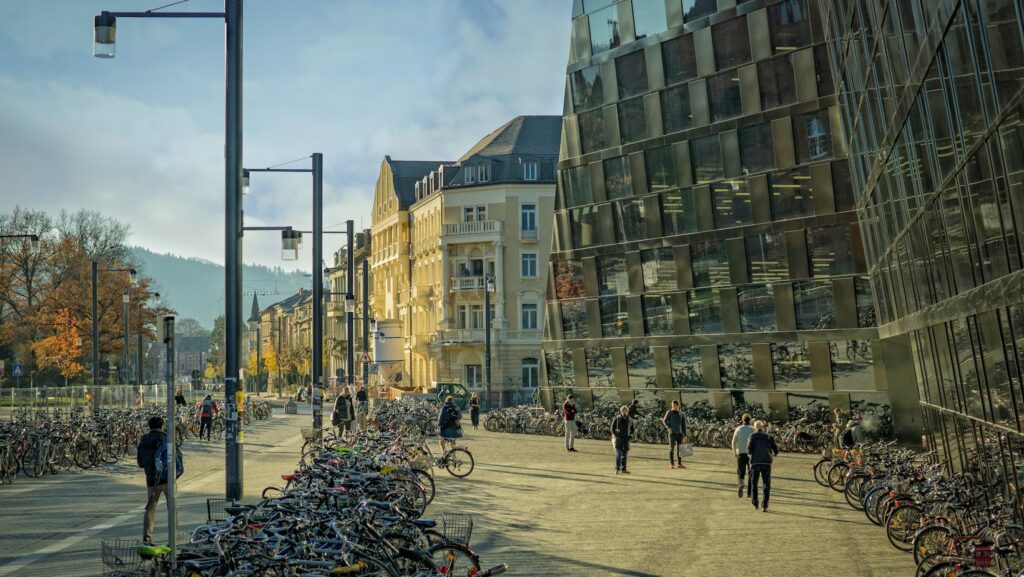In the hustle and bustle of city life, sustainable urban mobility has emerged as a key player. It’s not just about getting from point A to B anymore; it’s about how we can do so in a way that’s kind to our planet. This article delves into the heart of this fascinating concept, exploring its potential to reshape our urban landscapes.
Sustainable Urban Mobility
An integral aspect of urban life, sustainable urban mobility plays an indispensable role in shaping city planning and mitigating environmental impact. The following subsections delve into these facets in more detail.

Sustainable urban mobility stands as a vital component in city planning practices. It directly influences urban layouts, dictates the placement of infrastructures, and determines access to city resources. For instance, the wide-scale implementation of a bike-sharing program can lead to the development of bike paths across a city, promoting a healthier, more active populace. Likewise, the advent of electric public transport networks may necessitate the erection of charging stations, effectively steering urban growth in a sustainable manner.
Challenges in Implementing Sustainable Urban Mobility
Infrastructure Challenges
Urban environments often possess entrenched infrastructure tailored for traditional modes of transportation. Upgrading such a vast network takes considerable time, energy, and financing. For instance, making cities compatible for electric vehicles necessitates the installation of charging stations at strategic locations. This can be challenging, particularly in densely packed urban areas where space is at a premium. In addition, maintaining efficient public transport systems while minimizing carbon emissions requires significant technological investments and planning acumen.
Public Perception and Behavior Changes

Overcoming people’s ingrained behaviors and reassuring them about the feasibility of sustainable transport also pose significant challenges. A large portion of the public remains unaware or skeptical of the viability of sustainable modes like electric cars or bike sharing. People tend to worry about the reliability and convenience of such systems. This illustrates the need for robust public education campaigns to alter perceptions and encourage behavioral shifts towards sustainable urban mobility. Implementing this is often time-consuming and requires strategic, patient effort.
Future Trends in Sustainable Urban Mobility
The Role of Technology in Shaping Urban Mobility

Advancements in technology form the bedrock of tomorrow’s sustainable urban mobility. Innovations such as autonomous vehicles, smart traffic management systems, and data-driven urban planning transform the way societies move. Autonomous, or self-driving vehicles, for instance, promise to reduce traffic congestion, lowering pollution levels subsequently. Smart traffic systems, built with advanced algorithms and AI, make traffic flow smoother and regions more accessible. Lastly, data-driven urban planning, with the help of geographic information system (GIS) mapping and big data analytics, helps in efficient infrastructure placement, promoting the use of sustainable travel modes over conventional ones.
Impact of Global Climate Change Policies on Urban Mobility
The global urgency to mitigate climate change is profoundly influencing the path of urban mobility. Many cities, guided by international targets like the Paris Climate Agreement, are crafting their transportation policies with an aim to significantly reduce greenhouse gas emissions. Cities are increasingly leaning towards greener alternatives, such as electric buses, bikes, and even electric pedestrian paths. In addition, countries are tightening emission policies for vehicles, paving the way for more electric and hybrid models. These steps induced by climate change policies are nudging the world towards a more ecologically responsible mobility future.
The Bright Future
Sustainable urban mobility isn’t just a buzzword; it’s a pivotal factor shaping our cities’ future. By embracing greener alternatives like bike-sharing and electric public transport, we’re not only reducing carbon footprints but also enhancing the quality of urban life. It’s clear that the road to sustainability isn’t without its obstacles, but the rewards far outweigh these challenges. As technology continues to revolutionize urban mobility and climate change policies steer us towards greener alternatives, we’re on the cusp of a new era. The future of sustainable urban mobility is bright, promising a cleaner, healthier, and more accessible urban environment for all.

